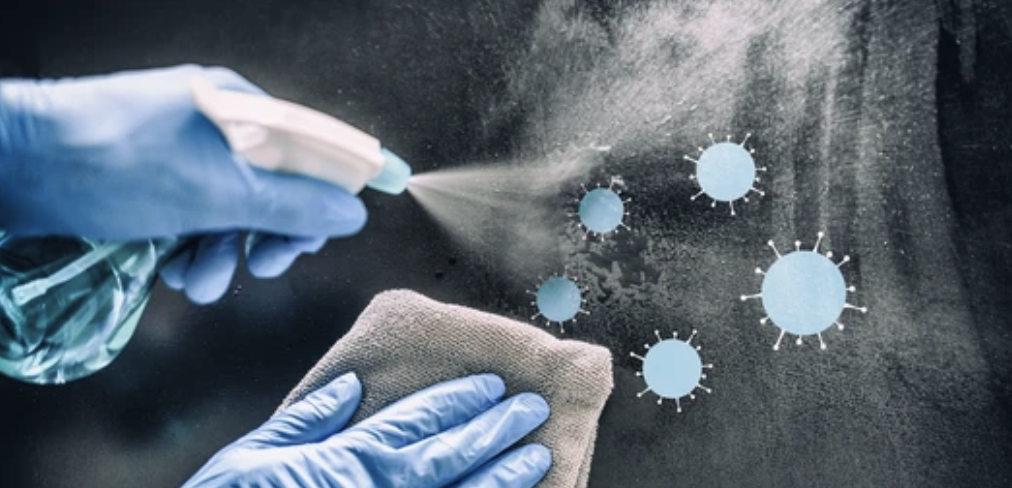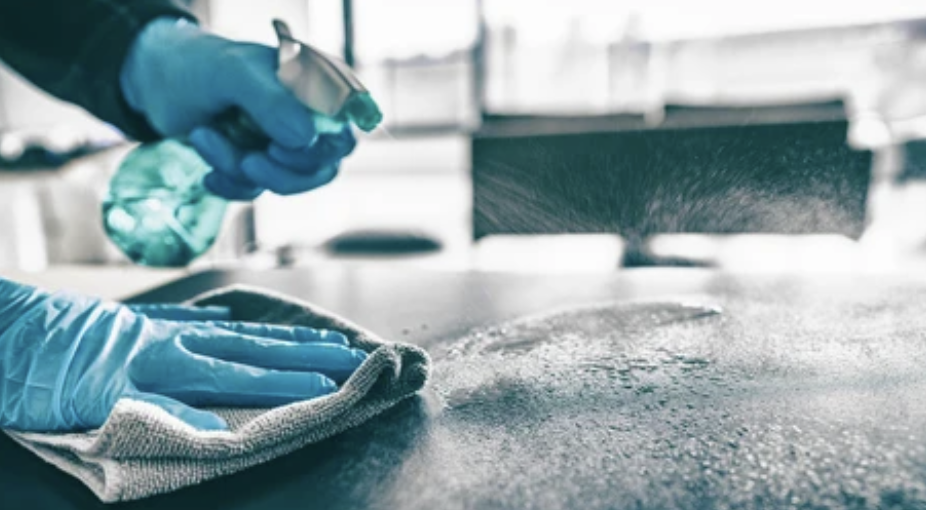Chapter 7: Bloodborne – Cleaning Exposed Areas

to minimize exposure risks.

Follow these steps to clean an affected area:
1. Personal Protective Equipment (PPE): Wear the necessary PPE suitable for the task.
2. Absorbent Material: Use absorbent towels or materials to wipe and contain blood or blood-containing substances.
3. Sharps Removal: If there are broken sharps, use forceps, tongs, or a dustpan (avoid using bare hands) to collect and dispose of them safely in a sharps waste container.
4. Disinfection Process: Apply a disinfectant spray to the contaminated area and allow it to sit for a few minutes to effectively sanitize the surface.
5. Drying Phase: Use absorbent materials to dry the sprayed area thoroughly.
6. Waste Disposal: Properly dispose of all used cleaning materials and PPE in designated waste containers as per workplace protocols.
OSHA Standards for Disinfectants:
In any workplace, maintaining a clean and safe environment is paramount to ensuring the well-being of employees. The Occupational Safety and Health Administration (OSHA) sets forth guidelines and standards to regulate occupational safety. One crucial aspect involves the use of appropriate disinfectants to mitigate the risk of exposure to harmful pathogens. This chapter explores OSHA standards and the disinfectants deemed appropriate for various settings.

OSHA Guidelines on Disinfectants:
OSHA, as a regulatory authority, emphasizes the importance of employing effective disinfectants to prevent the spread of infectious agents, especially in environments where exposure to bloodborne pathogens is a concern. The following are key aspects outlined by OSHA:
EPA-Registered Disinfectants:
OSHA aligns with the Environmental Protection Agency (EPA) in recommending the use of disinfectants registered with the EPA. These should be specifically labeled as effective against Human Immunodeficiency Virus (HIV), Hepatitis B Virus (HBV), and Hepatitis C Virus (HCV).
Diluted Bleach Solutions:
Another endorsed method is the use of diluted bleach solutions. OSHA recommends maintaining a specific ratio—specifically, one-fourth cup of household bleach per gallon of water. This solution proves effective in disinfecting surfaces and materials.
FDA-Cleared High-Level Disinfectants:
High-level disinfectants, cleared by the Food and Drug Administration (FDA), also meet OSHA’s criteria. These disinfectants undergo rigorous evaluation to ensure their efficacy and safety.
Ensuring Effective Cleaning and Disinfection:
Compliance with OSHA standards for disinfectants is crucial for effective cleaning and disinfection. This not only safeguards the health and well-being of workers but also contributes to a safer working environment. Adhering to these guidelines significantly reduces the risk of exposure to bloodborne pathogens.
Workplace Implementation:
Proper training on the selection, application, and disposal of disinfectants is essential. Additionally, establishing and consistently following workplace protocols ensures a thorough and systematic approach to cleaning and disinfection.

